Children’s feet – Children’s shoes
Questions & Answers
General Information
Foot length and age of children
We have summarized our measurement results for parents on a few thousand children’s feet and created a diagram of the foot length in the individual age groups.
In this way you can see at a glance in which area your child is lying and how quickly children’s feet are growing.
Note: These are guidelines. So it can easily be that the length of your child’s feet is slightly different.
Tip: How can you determine the optimal inner length for the right shoes? We have developed the plus12 for this purpose.
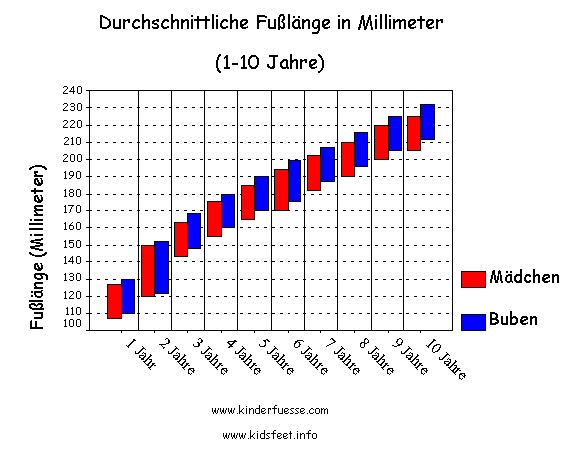
How big is a shoe size?
There are around four established shoe size systems around the world. The “Parisian stitch” is mostly used in Europe: 1 shoe size (EU) corresponds to 2/3 cm, i.e. 6.67 mm in length.
For example, one calculates the inside length of a size 30 shoe:
Shoe size multiplied by 2 (e.g. 30 x 2 = 60). Divide the result by 3 (e.g. 60: 3 = 20 cm)
Strangely enough, the shoe size has not yet been standardized in Europe. And so it happens that although the outside of the shoe e.g. Size 30 is written, but 20 cm can only be found in the rarest cases … And strangely enough, the shoes are almost always shorter and rarely longer …
(see also: How about the shoe sizes?)
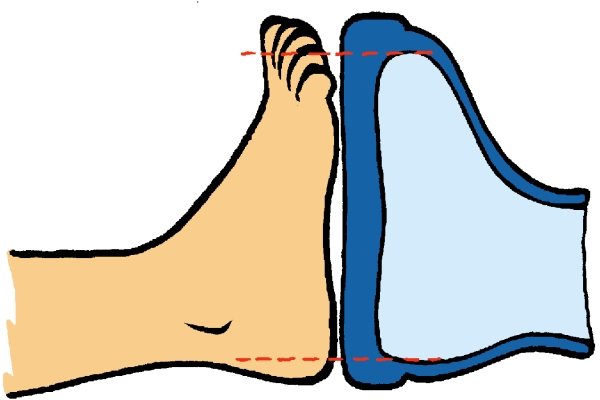
What shoe size is that now?
Our research shows that the majority of shoe sizes on children’s shoes are wrong. Where e.g. Size 30 is usually only size 28 inside – sometimes only 27, or 26 *. Orientation towards shoe sizes is therefore pointless.
Therefore our tip: Measure in millimeters.
If you still want to convert: 200 millimeters of inner length of a shoe corresponds to EU shoe size 30. Here is a table with all values:
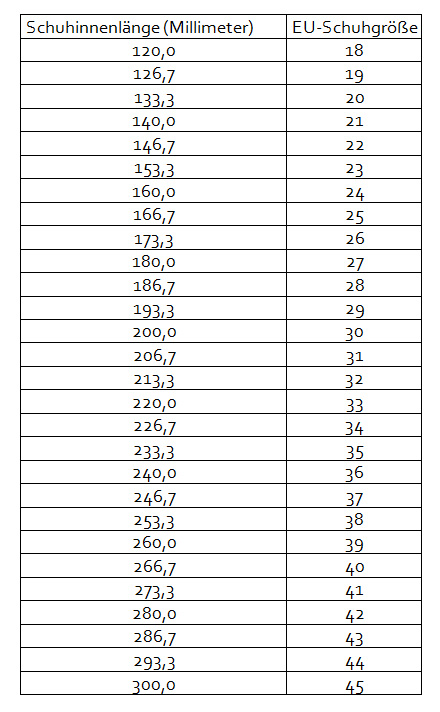
How many millimeters do children's feet grow each month?
In the first research project we examined the feet of 3-6 year old children and analyzed their growth. The result: At this age, children’s feet grow an average of 1 mm per month. If you know this, you have a decisive advantage when buying children’s shoes: Children’s shoes should be at least 12 mm and max. 17 mm longer than the feet. So if you buy shoes that are 17 mm longer than your feet, the shoes will fit for about 5 months (up to 12 mm clearance)!
Are you unsure because it is an average? We have also calculated that: Only 2.5% of children have a greater length growth of the feet …
Tips:
- At the age of 1-3 years, an average growth in length of the children’s feet of 1.5 mm per month can be expected
- At the age of 3-6 years, children’s feet grow an average of 1 mm per month (length)
- At the age of 6-10 years, children’s feet grow a little less than 1 mm per month (length)
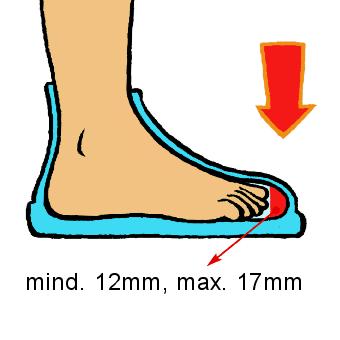
When does my child need their first shoes?
Take your time with the first shoes! Just because the little feet are already tapping around doesn’t mean that you should get shoes. Small feet develop best without shoes.

Does my child need first walkers?
Forget all the arguments about high, low and supportive shoes!
We learn to walk, run, jump and hop without shoes!
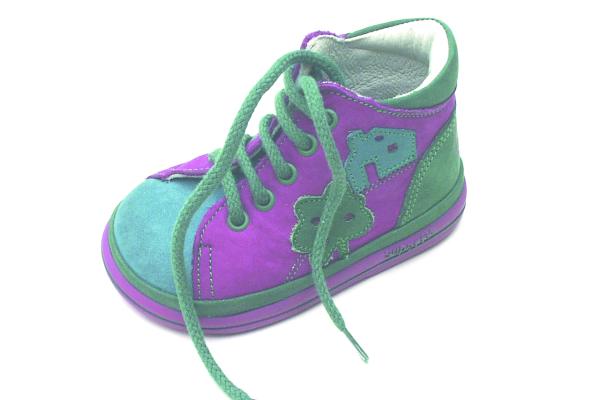
Can you actually use used children's shoes?
Of course! For decades, parents have been persuaded to feel guilty and said that it is not good for children’s feet. However, there is nothing to it if you take our tips into account (see below). And it also has two advantages: using used shoes is economical (saves your budget) and ecological (saves raw materials) sensible. Shoes can only be worn for a few months in the first few years of life until they are too small. So it makes sense to take shoes from older siblings, for example.
Two tips:
- Of course, the shoes have to be long enough (see: How do you measure shoes yourself?)
- Has the shoe sole worn off on one side in the area of the heel and is the shoe hanging on one side? If so, it is no longer recommended.
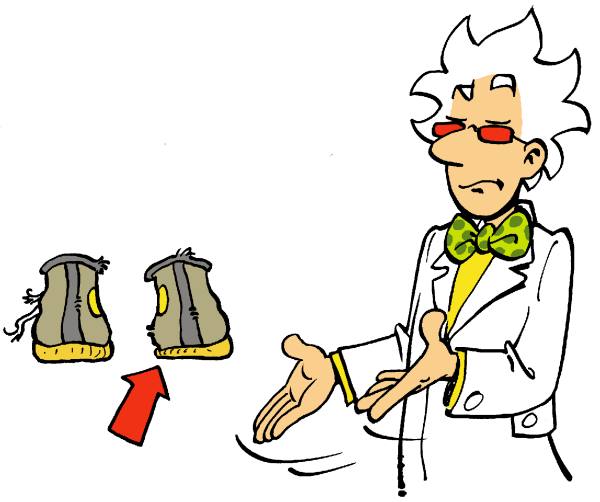
Does it make a difference whether I buy shoes in the morning or in the afternoon?
Yes! Adult feet increase in size by around 4% over the course of the day. They lengthen by a few millimeters and become approximately 1 cm wider. So far there are no comparative data for children’s feet. However, empirical values show that even small feet have daily fluctuations. It is therefore advisable to adjust shoes in the second half of the day.
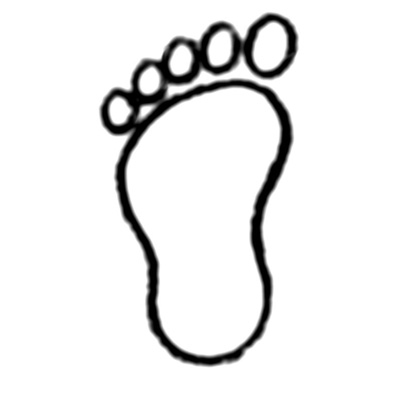
Can children's shoes that are too short affect the health of children's feet?
Yes! In the Austrian research project “Children’s Feet-Children’s Shoes”, we examined the position of the big toe in kindergarten children and found that only 24% had straight big toes. Then we checked whether there was a statistical connection between shoes that were too short and crooked big toes. Lo and behold: there was a clear connection for both street shoes and slippers. This has scientifically proven that children’s shoes that are too short damage children’s feet!
Click here for the publications
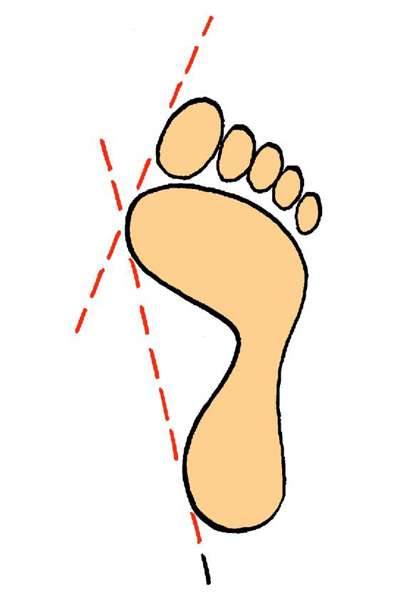
Fit of children’s shoes
Buying children's shoes online: what's the best way to do it?
Again and again parents tell us how difficult it is to buy children’s shoes online: Because the shoe sizes of children’s shoes are usually wrong and we found deviations of up to 5 sizes in our studies, parents usually order several shoe sizes in the online shop. And when you are lucky enough to fit a pair, the others have to be sent back. Our parents’ survey in 2011 (3843 parents) gave a surprising result: of 522 pairs of children’s shoes ordered, 450 pairs were returned (= 86.2%)! How to buy suitable children’s shoes online:
- With the plus12: Stand your child on the plus12 and measure the foot from the heel to the longest toe. Read the millimeter value on the scale. Tip: The plus12 automatically adds 12 mm to the foot length when you measure your feet, so you have the required inner length for matching children’s shoes with just one movement. New shoes can have up to 17 mm clearance. This has the advantage that the shoes will fit for a few months. Therefore: Add 5 millimeters to the millimeter value of the plus12 for new shoes. Remember this value: This is how long the children’s shoes ordered online should be.
- Make a cardboard template: Place your child on a firm cardboard and mark the outermost point on the heel and on the longest toe. Then add 17mm of slack on the longest toe. Now use a ruler to measure the distance between the heel and the end point of the 17 mm mark. Remember this value: This is how long the children’s shoes ordered online should be.
- Inform the online dealer about the desired inside length and ask them to email you the exact inside lengths (millimeters) of some of the desired models. This saves you the possibility of return shipments.
Note: Of course, the shoes must then also fit well around the ball of the foot and the heel. This does not work with all shoes – despite the optimal inner length. Reason: Shoes are mass-produced and feet are very different from each other. The only thing that helps is switching to another model.
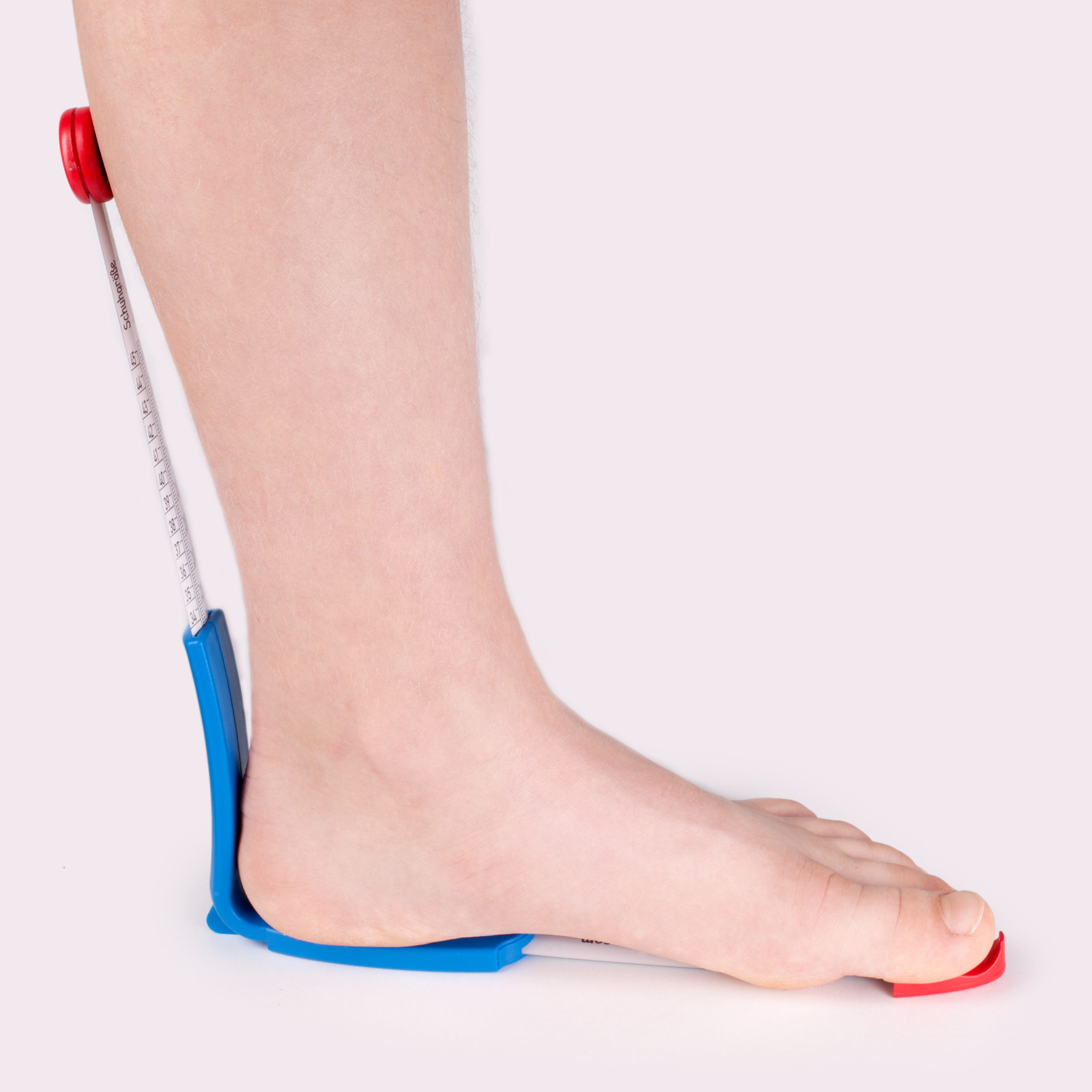
How do I test the fit of children's shoes with the insole?
A practical test – with a few pitfalls!
During our investigations we noticed that for many manufacturers the length of the insole does not correspond to the inner length of the children’s shoes. Some are too short and slide back and forth in the shoe, some are longer and bend up at the front of the shoe. According to information from some children’s shoe companies, this is because the shoes and insoles are produced in different companies.
We therefore recommend: First of all, check whether the insole and the inside length of the shoe match at all.
1. Insole test: can the insoles be used for a fit test?
With the plus12: Take the insole out of the shoe and measure the inside length of the shoe. Then place the plus12 on the insole (now the plus12 measures like a ruler) and measure the length. If both values are identical, the insole can be used for a fit test.
Without plus12: Try to push the insole back and forth in the shoe. Then take the sole out of the shoe and check whether it curls up in the toe area. If the insole cannot be pushed back and forth or rolled up in the toe area, it can be used for a fit test.
2. Fit test with the insole: Do the shoes fit?
A common mistake: the heel is placed exactly on the rear edge of the insole.
However, measurements show that the heel in the shoe is around 1 cm from the rear edge of the insole. This must also be done during the fit test with the insole:
- Place the foot on the sole so that the heel is 1 cm from the rear edge.
- Measure the clearance from the longest toe to the end of the insole. If there is 12-17mm of slack, the shoes will fit.
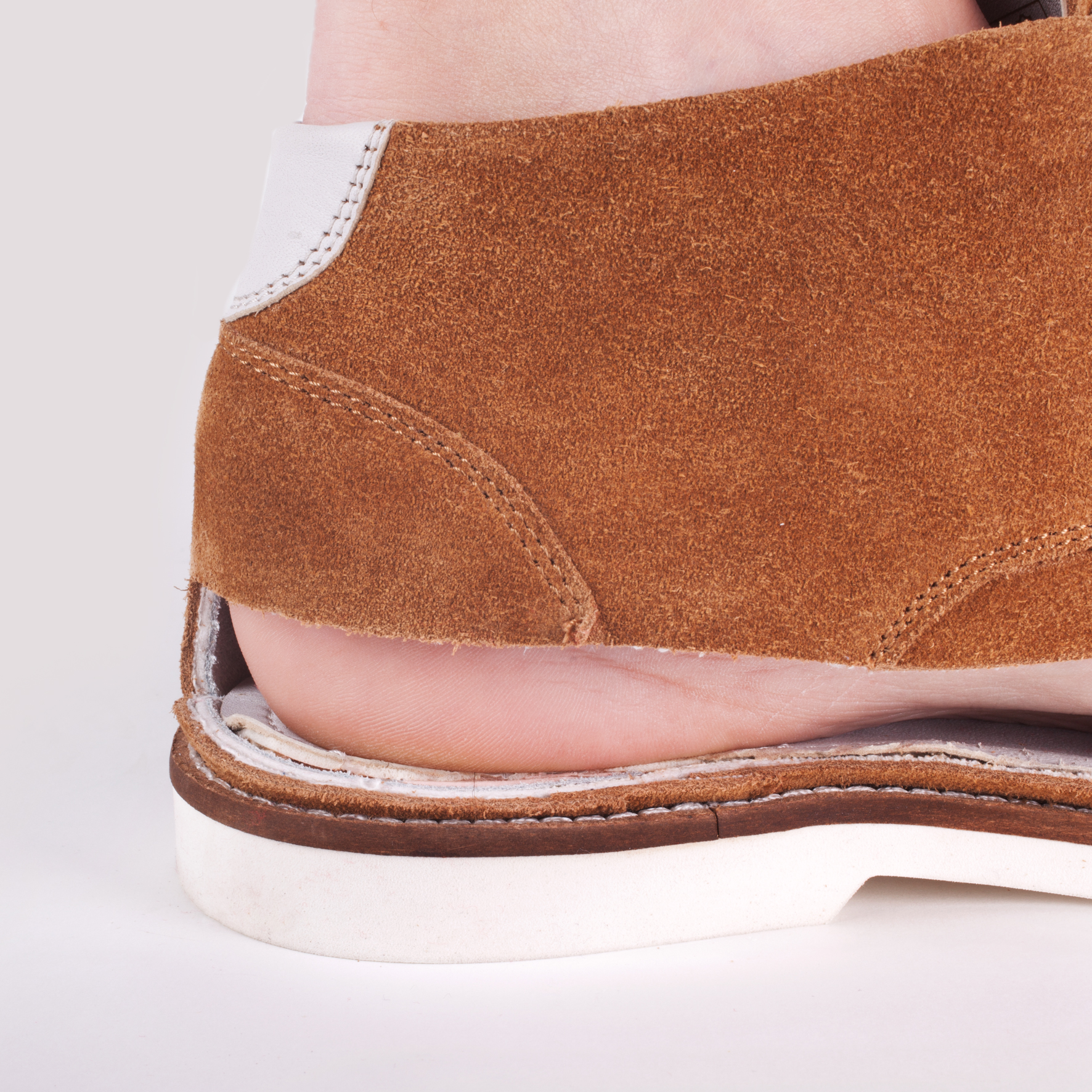
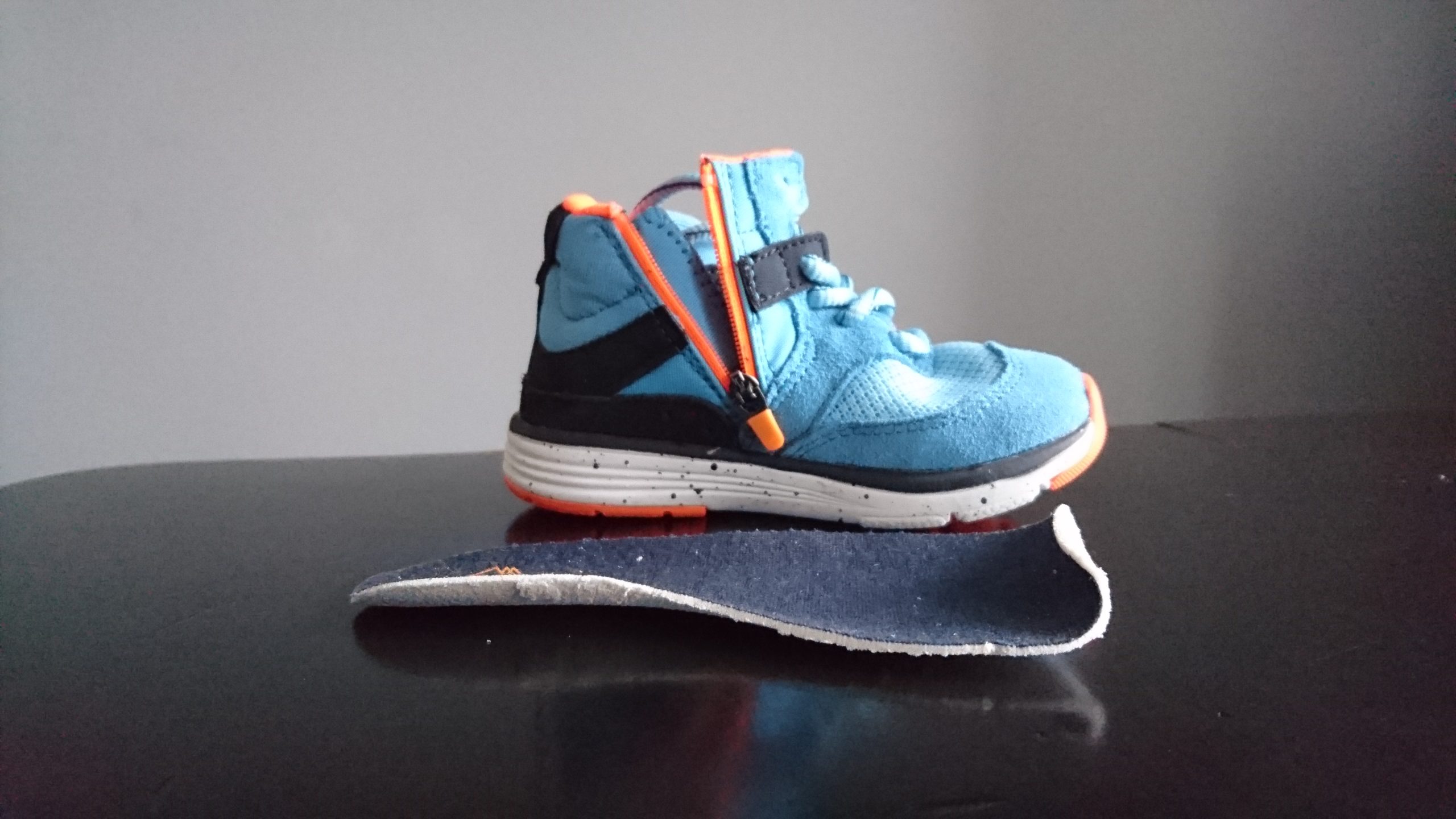
Can I buy suitable children's shoes without taking my child to the store?
But of course – and it’s very easy!
First, measure your child’s foot length at home.
We recommend two methods for this:
- With the plus12: Stand your child on the plus12 and measure the foot from the heel to the longest toe. Read the millimeter value on the scale. Tip: The plus12 automatically adds 12 mm to the foot length when you measure your feet, so you have the required inner length for matching children’s shoes with just one movement. New shoes can have up to 17 mm clearance. This has the advantage that the shoes will fit for a few months. Therefore: Add 5 millimeters to the millimeter value of the plus12 for new shoes. Remember this value and take the plus12 with you to the shoe store. There you start looking for a shoe with the right inner length.
- Make a cardboard template: Place your child on a firm cardboard and mark the outermost point on the heel and on the longest toe. Then add 17mm of slack on the longest toe. Now cut out the strip two fingers wide and take it with you to the shoe store. Insert the cardboard template into the shoe: if it bends up, the shoes are too short. If the template can be pushed back and forth, the shoes are too long and if the strip fits well into the shoe, the shoes will also fit.
Of course, children’s shoes must also fit around the balls of the feet and heels. Even if the inside length fits perfectly, the shoes can be too wide or too tight. In this case we recommend switching to a different model: not every children’s shoe fits every children’s foot.
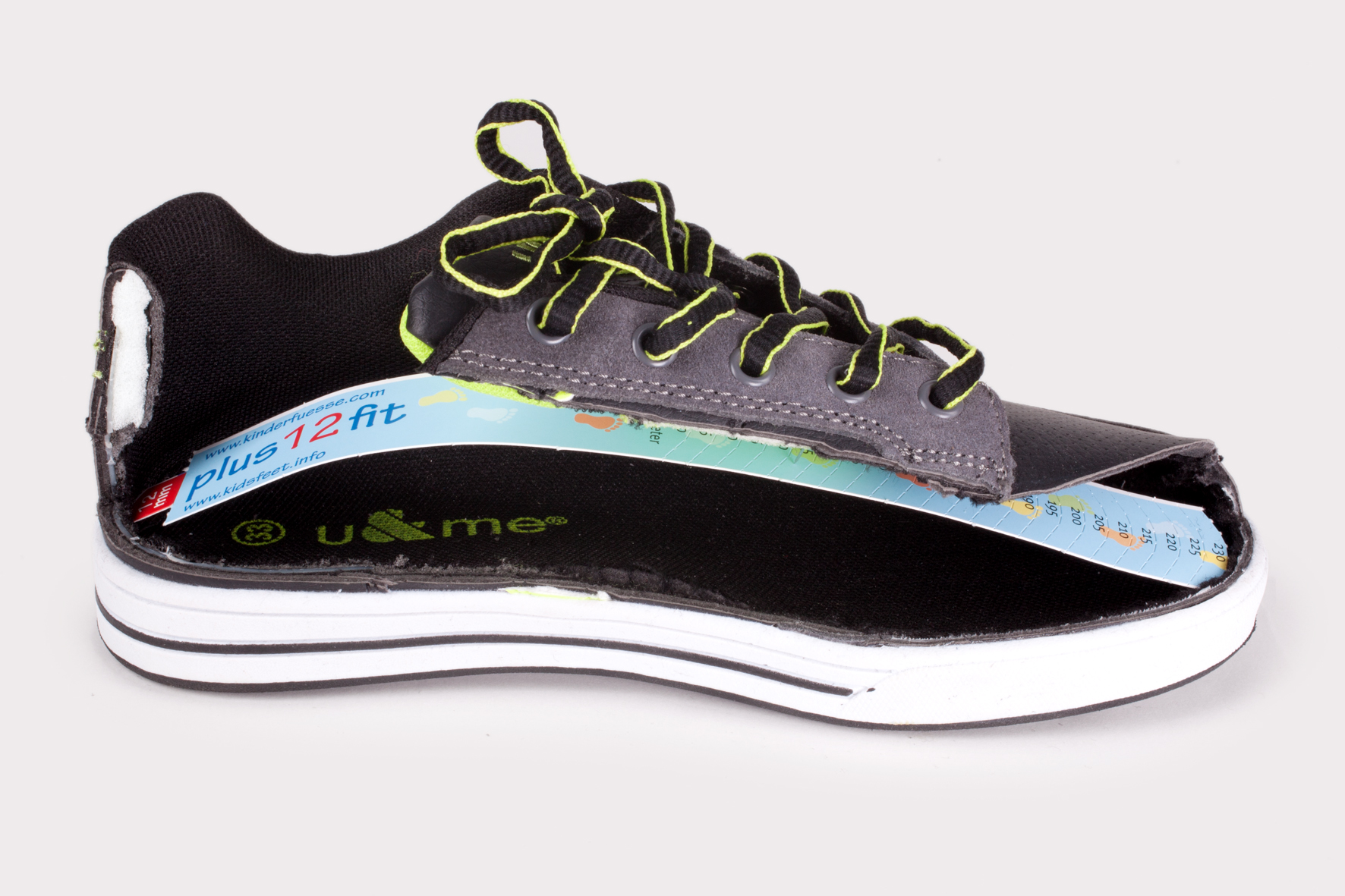
Do sandals have to be 12 mm longer?
Open sandals have one great advantage: because they are open at the front, they cannot pinch the toes. That’s why sandals could actually have less than 12 mm of leeway. Provided that the children’s feet can be easily fixed in the sandals with the straps, we still recommend a clearance of 12 mm. And there are two reasons:
- Occasionally the front edges of the sandals are quite sharp and if there is not enough space, the toes slide over this edge every time
- Children’s feet grow (growth of children’s feet) and so that the sandals fit for a few months, 12 mm clearance is ideal
Sandals as “training equipment”: When children wear sandals for the first time, there are occasional funny coordination problems. Suddenly walking doesn’t work that well anymore, open-toe shoes are unfamiliar, hang loosely on your feet and actually only hinder you. Experience shows that this happens very quickly: children learn to walk with sandals in a very short time.
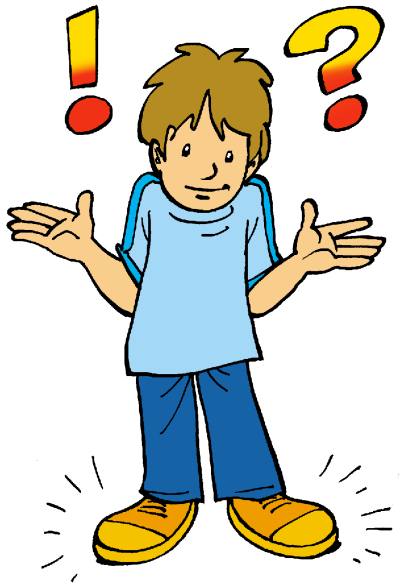
How much room does a foot need in the shoe?
12 mm is the minimum clearance a shoe should be longer than the foot. We know from research that the feet of 3-6 year old children grow about 1 mm per month (length). Seen in this way, shoes with 12 mm clearance would be too short again after just one month.
That’s why we asked ourselves what maximum margin we can recommend so that the shoes fit for a few months. During children’s foot measurement days, we always had children with us who wore quite long shoes. We discovered that a 17 mm clearance can easily be recommended as the maximum clearance.

How do you measure shoes yourself?
1. The thumb test
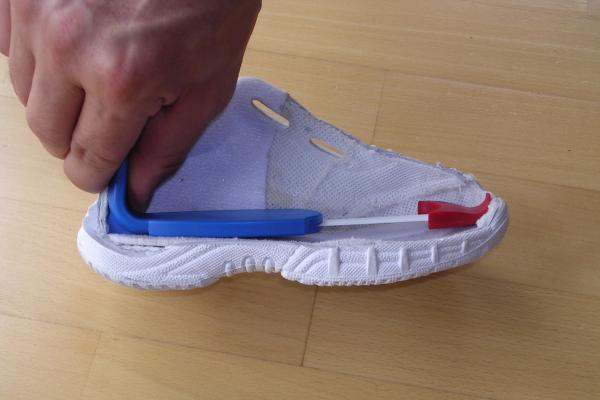
The thumb test is used to determine whether the shoe length roughly – namely “over the thumb” – fits or not. While standing (yes, that makes a difference) and of course with the shoe on, you check whether the thumb fits between the longest toe (it doesn’t have to be the big toe) and the tip of the shoe. If this succeeds, you can be sure that the shoe is long enough and that the foot has enough room to move.
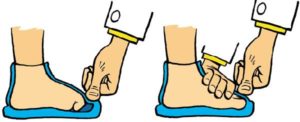
A tip: make sure that your toes are not bent in the shoe. So press lightly on your toes with one hand while measuring with the thumb of the other hand. And: Always measure both feet!
By the way: We kept asking ourselves how wide an average thumb is and the result is astonishing: approx. 18 mm. Seen in this way, the thumb test for new shoes is ideal – provided it is used correctly!
2. Draw the template
A good method to be absolutely sure that the little foot actually has enough space in the shoe!
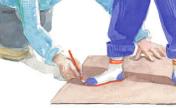
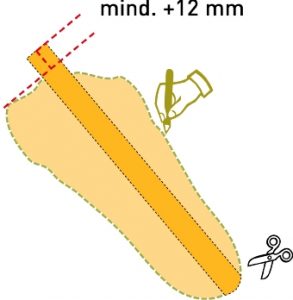
- Stand your child barefoot (or in socks) on a piece of sturdy cardboard.
- Using a pencil, trace the outline of both feet.
- Add 12mm on the longest toe. (or 17 mm for new children’s shoes)
- Connect the end points and cut out a 2-finger-wide strip (fits more easily into the shoe than the whole template)
3. plus12:
The plus12 is the first shoe size and brand-independent measuring device for the fit of children’s shoes.
That’s how it’s done (How the plus12 works)
Do children actually feel whether the shoes fit or are too short?
This is exactly what we asked ourselves, because at children’s foot measurement days there are always children who wear shoes that are 4 and 5 sizes too short! First we went looking for studies on this topic and discovered that this question had not yet been investigated.
Then, as part of our second research project (Austrian Federal Ministry and Healthy Austria Fund), we built a shoe test road for the children: The children were given a shoe that was much too short on one foot and a shoe that fitted perfectly on the other. Then the children took a few steps and were then asked whether the shoes would fit them.
The amazing result: Children cannot yet clearly define the fit of shoes and even describe shoes that are far too short as suitable. This is why it is so important that the inside length of children’s shoes is checked regularly.
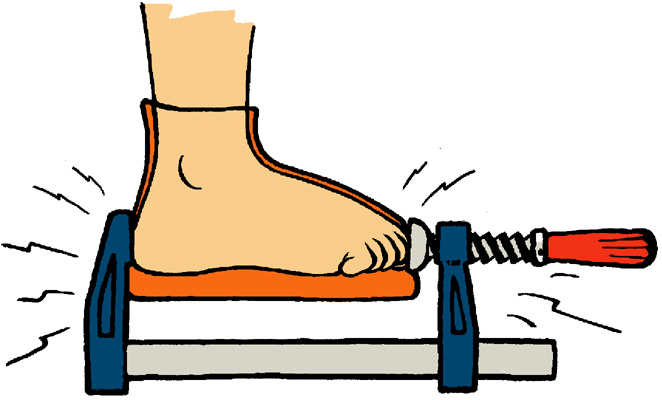
How wide schould kid's schoes be for an ideal fit?
The question of width is a tricky one. First of all, no research has been done to determine how wide shoes should be to fit well (just as wide as the foot? A little narrower? A little wider?), and secondly there is still no simple, dependable method of measuring the width (or girth: the circumference of the shoe at the ball of the foot) of children’s shoes.
Some manufacturers do offer children’s shoes in different girths (that’s the circumference of the shoe at the ball of the foot), but initial investigations have shown that here, just as with length, this information is not always dependable: instead of making shoes with different widths, the shoes are often the same width, with just a different girth. This seems confusing, but all it really means is this: The shoes are just made higher at the ball of the foot, increasing the circumference but not the width. This is anything but a healthy solution, because every child’s foot has a different width.
We’re working on solving this problem, but until we do, the only advice we can give you is this: As troublesome as it may be, have your child try on a number of different brands. You will find that kids’ shoes have different girths inside. With enough patience, you should be able to find the shoe that fits best. Although it is difficult to test, occasionally there is some extra space between the upper and the foot. Use the laces or the Velcro fastenings to adjust the girth of the shoe to fit properly.

What about shoe sizes: I've heard that they're usually incorrect and that the shoes are much shorter inside than they schould be. Is this really true?
During our Austrian research project, we examined the street shoes, house shoes and slippers of around 800 children, and we discovered that only approximately 3% of all of the shoes tested had the correct inside length. Interestingly, almost all of the shoes we measured were too short; hardly any of them were longer than indicated by the labelled size. Then we asked ourselves if brand-name shoes were better than no-name shoes, if cheaper shoes were not as good as expensive models, if smaller sizes were more carefully sized than larger ones, etc. But we were surprised to find out that there was no difference: whether expensive, cheap, no-name or what have you – the shoes produced by almost all manufacturers were just too short.
You might ask yourself how this could be. It probably has to do with the fact that this subject hasn’t been made public before now, and therefore – although shoe manufacturers have been aware of the problem for many years – has been consistently ignored. And interestingly enough, no initiative has been made to make standardized shoe sizes in the EU mandatory… So it will probably be a while before children’s shoes really are the size they’re labelled…
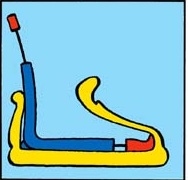
All about plus12
How the plus12 works
Here you can find out how the plus12 works.
The measurement results of the plus12 are sometimes quite uncertain. Here are some parenting questions from the last few weeks. Please write to us and let us know your point of view about the plus12, we would be very pleased to hear your comments info@kidsfeet.info
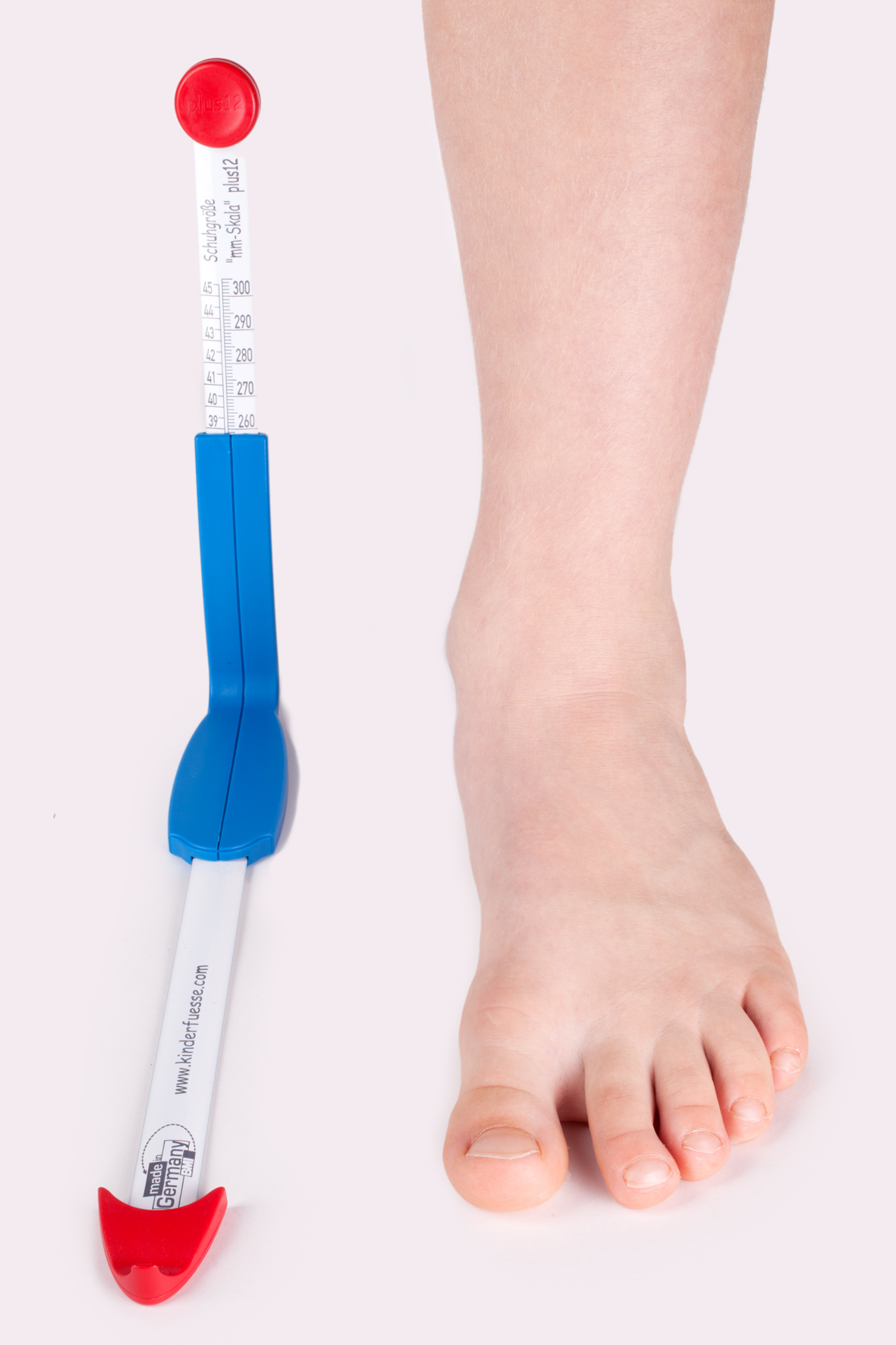
Why can't I get the tip of the plus12 all the way into the toe of the shoe?
While developing the plus12, we analysed data on hundreds of children’s feet. We observed that children’s big toes are usually at least 12 mm high. For this reason, we made the red measuring tip of the plus12 the same height, which makes it possible to recognize immediately if the toe of a shoe is too low. If the tip of the plus12 won’t fit all the way into the shoe, then the toe cap is too low and no good for children’s feet.

My son's shoes are a size 28. When I measure the inner length of his shoes with the plus12, it shows only size 26. Am I doing something wrong?
We looked in to this question in the course of the Research Study. We measured 631 outdoor shoes and 677 slippers. We came to the conclusion that only 3% of the outdoor shoes and 1% of the slippers measured had an inner length which corresponded correctly to the labelled size. For example: a shoe labelled size 28 is often only a size 26 inside, sometimes only a 25 or 24. The problem is that shoe stores usually only measure the length of the foot and ignore the inner length of the shoe. That could be one of the reasons why so many children wear shoes that are too short (it is estimated that in Austria, about 220,000 children between the ages of 3 and 6 wear shoes which are too short). With the plus12 this should be a thing of the past. When fitting children’ shoes the foot and the shoe should be measured.

I have also checked the fit of my own shoes. First I discovered that my feet need shoe-size 39. Then I measured my shoes and the plus12 just showed size 37. That can't be right, because the shoes are comfortable!
This was the question which set the ball rolling! Let us start from the beginning: Three studies have shown that in movement, the foot changes considerably. Walking, running and jumping cause the body’s weight to be distributed in such a way, that the foot changes shape, getting longer and wider. With each step, the foot moves forward a few millimetres. These studies showed that feet need a buffer of up to 12 millimetres. This applies to small feet as well as big ones. Marathon runners even wear shoes which are as much as 20 mm longer than their feet! Although some questions still remain to be answered, it is indisputable that shoes have to be longer than feet. At our stand about children’s feet at the exhibitions we visit, we are often also asked to measure adult feet. We are usually very surprised to find adults wearing shoes which are too short. Often their shoes are just as long as their feet, therefore at least 12 mm too short. But how do you explain to an adult who thinks his shoes fit, that they are really much too short? Test subjects given longer shoes notice the big difference when they return to the old ones, and don’t find the old ones so comfortable anymore. We can apparently get used to anything, even shoes which are too short.
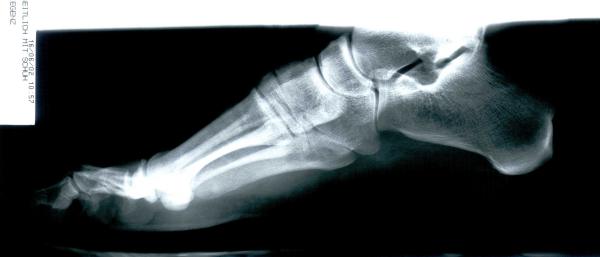
What are the differences between the plus12med and the plus12?
- The plus12med has a millimeter and shoe size scale (plus12 only has a millimeter scale)
- The plus12med ranges from shoe size 18-50 (plus12 from 118mm to 300mm – approximately shoe size 18-45)
- The plus12 costs EUR 15,90, the plus12med costs EUR 16,90
- The plus12 is blue, the plus12med is green
Both of them start at approximately 118 mm (approximately shoe size 18) and can be used for children.
And both of them can be clicked into the plus12base and are produced in Germany.